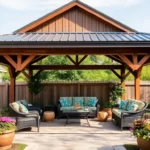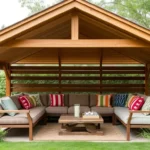Creating a welcoming outdoor space is more than just an aesthetic choice; it’s an opportunity to transform your backyard into a personal oasis where both relaxation and social gatherings can flourish. With the right pergola design, your outdoor area can become a stylish extension of your home, offering both shelter and sophistication. Whether you’re a DIY enthusiast ready to tackle a new project or a beginner eager to learn, building your own pergola is an achievable dream.
In this article, we’ll explore eight modern pergola designs that cater to various skill levels and styles, ensuring there’s something for everyone. From sleek, minimalist structures to more intricate designs, you’ll find detailed guidance to bring your vision to life. Get ready to enhance your outdoor living experience with these inspiring and practical pergola ideas that promise to blend functionality with modern flair.
Understanding Pergola Design Basics
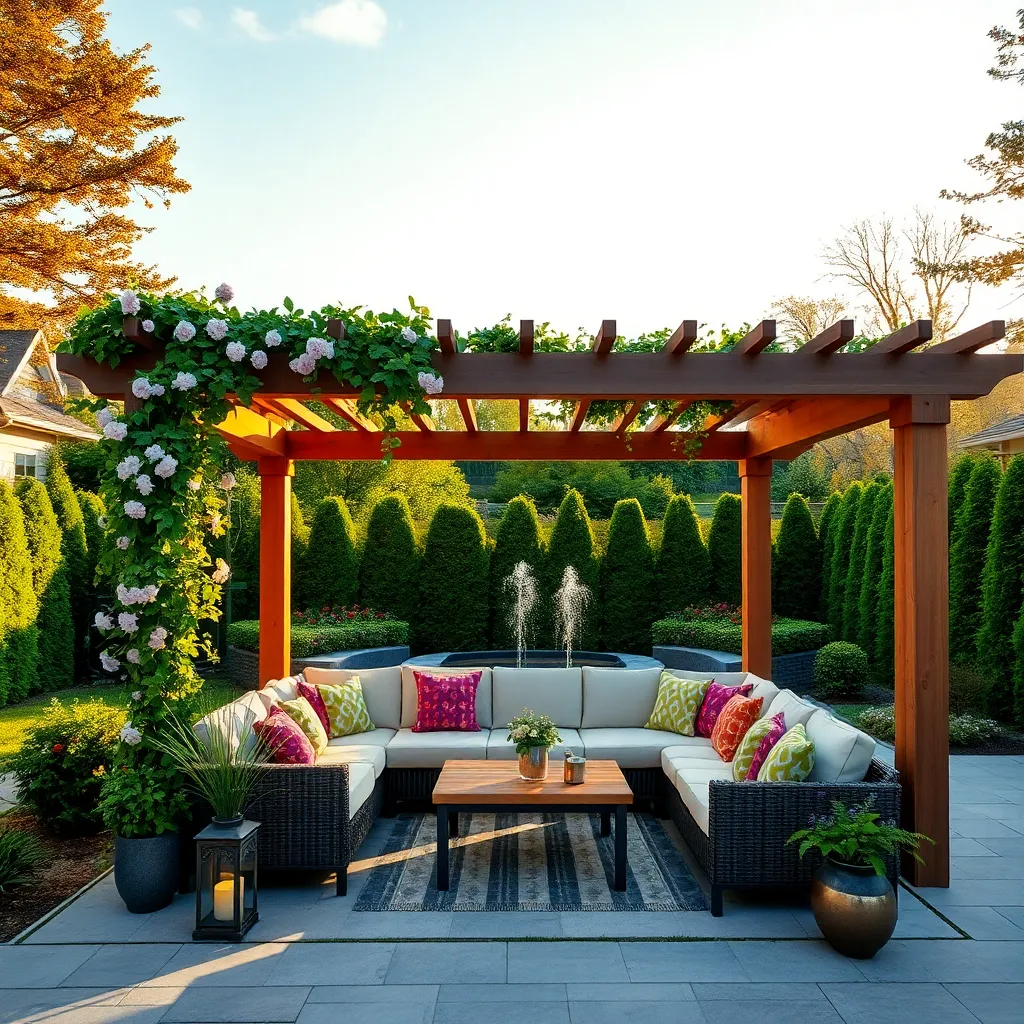
Understanding the basics of pergola design is essential for creating a space that enhances your outdoor living area. Start by considering the purpose and placement of your pergola—will it provide shade, support for climbing plants, or simply a decorative element? Common materials include wood, which offers a classic look, and aluminum, known for its low maintenance. For beginners, a simple rectangular design using pressure-treated lumber can be a great starting point. Ensure the posts are set securely in concrete for stability, and remember to check local building codes before starting your project.
For those looking to add a modern touch, consider integrating sleek design elements like metal brackets or a polycarbonate roof for added weather protection. Advanced builders might explore adding custom features like LED lighting or retractable canopies for versatility. Opt for a design that complements your home’s architecture and landscape for a cohesive look. Don’t forget to measure your space accurately, and draft a detailed plan before procuring materials. This attention to detail ensures your pergola not only looks great but stands the test of time.
Tools and Materials Checklist
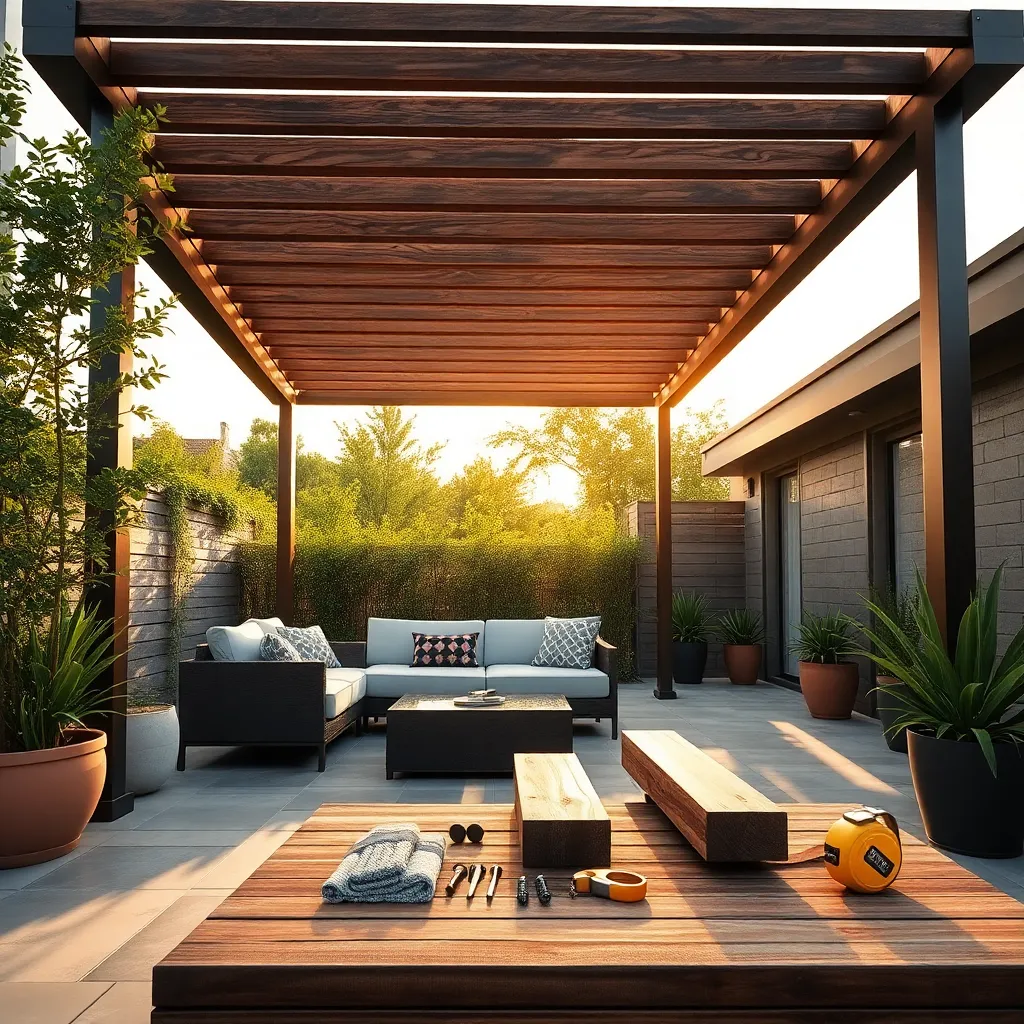
Building a pergola requires a well-thought-out selection of tools and materials to ensure a sturdy and visually appealing structure. Start with the basics: a reliable tape measure, saw (circular or miter), drill, and a level to ensure precision in your cuts and assembly. For beginners, consider using pressure-treated wood, which is durable and easy to work with. You’ll also need concrete mix for securing the posts and weather-resistant screws or bolts to hold everything together. These essentials will help you lay a solid foundation for your pergola.
For those looking to add a touch of modern design, opt for aluminum or steel beams which offer a sleek, contemporary look while providing added durability. Advanced builders might explore using a combination of wood and metal for a striking, hybrid design. Ensure you have the right fasteners for your chosen materials, and consider using a cordless impact driver for efficiency. Don’t forget optional elements like shade fabric or climbing plants to enhance both functionality and aesthetics. With the right tools and materials, your DIY pergola project will be a rewarding addition to your outdoor space.
Choosing the Right Wood Type
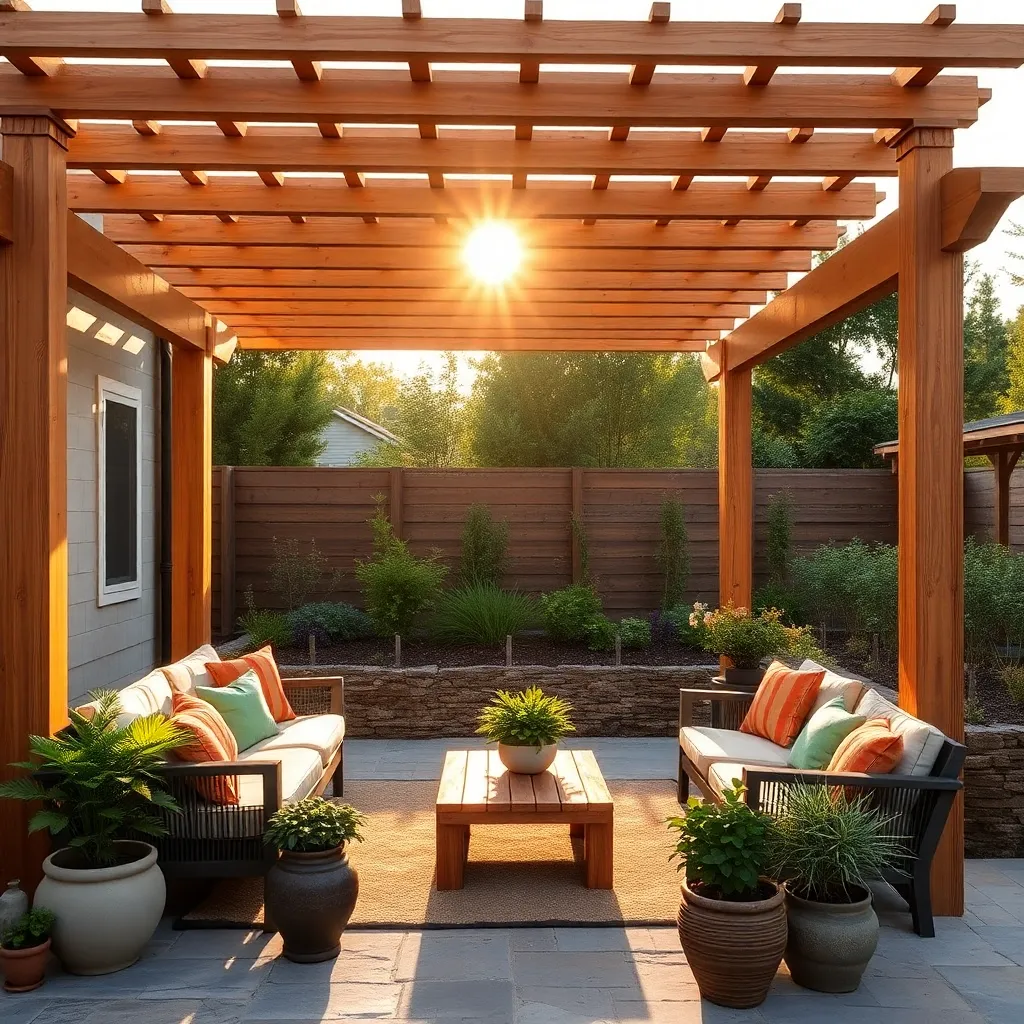
When selecting wood for your pergola, consider using cedar, redwood, or pressure-treated pine. Cedar and redwood are naturally resistant to decay and insects, making them excellent choices for longevity and minimal maintenance. Pressure-treated pine is a more budget-friendly option, treated to resist the elements, though it may require regular staining to maintain its appearance.
To ensure your pergola stands strong, choose wood with a thickness of at least 4×4 inches for posts and 2×6 inches for beams. This provides the necessary support while maintaining a sleek, modern look. For a contemporary touch, consider incorporating metal hardware or brackets to contrast the wood, adding both structural integrity and a stylish edge to your design.
Step-by-Step Assembly Guide
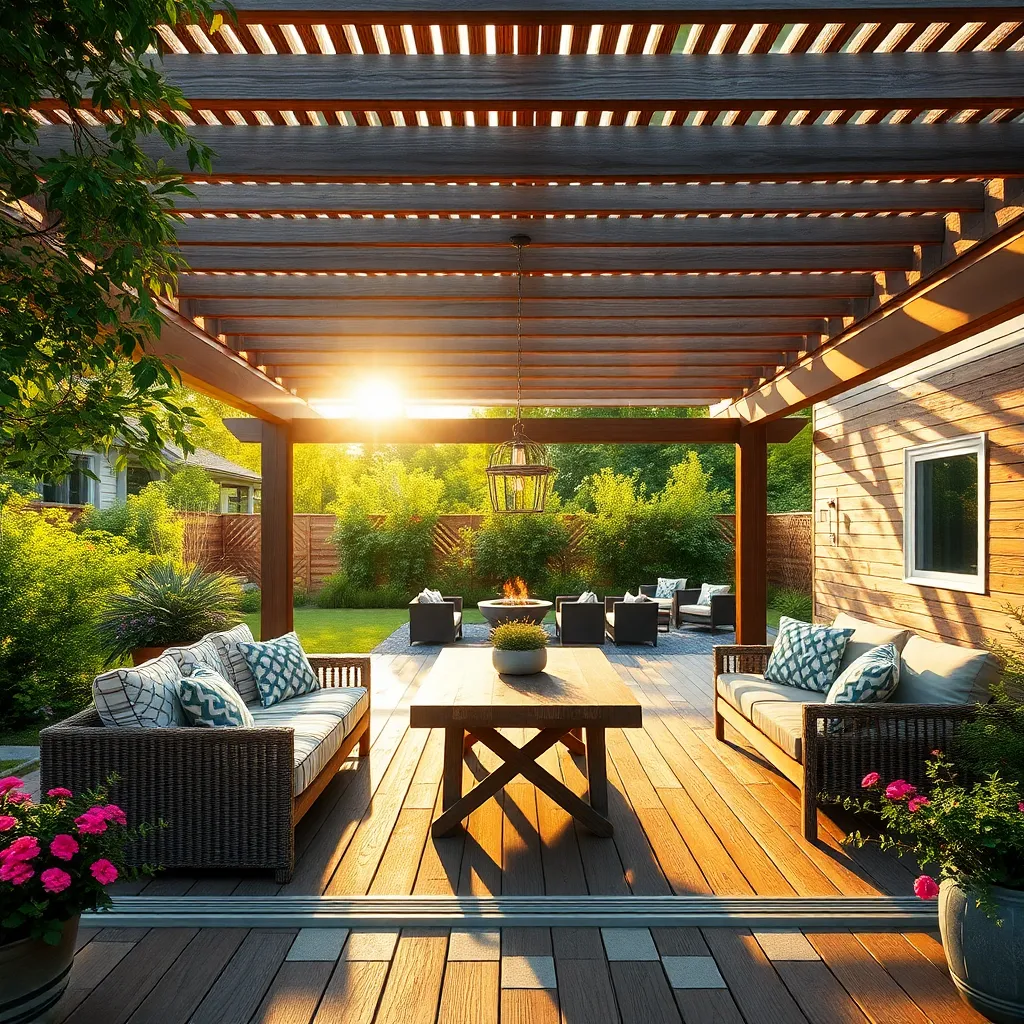
Starting your pergola assembly can be straightforward with the right tools and preparation. Begin by gathering essential materials such as treated lumber, galvanized screws, and a cordless drill. For a standard pergola size, consider using 4×4 posts for the supports and 2×6 beams for the crossbars, ensuring durability and stability. Lay out your pergola’s dimensions with stakes and string, typically a space of 10×10 feet offers a pleasant proportion for most backyards.
As you proceed, focus on accurate measurements and level surfaces to ensure structural integrity. Use a post hole digger to set your support posts at least 2 feet deep for stability, and employ a spirit level to keep everything aligned. For a modern touch, consider adding shade cloth or climbing plants to your pergola, enhancing both function and aesthetic appeal. Advanced builders might incorporate built-in lighting or adjustable louvers for a contemporary finish. By following these steps, you’ll create a striking outdoor feature that combines beauty and practicality.
Incorporating Modern Design Elements
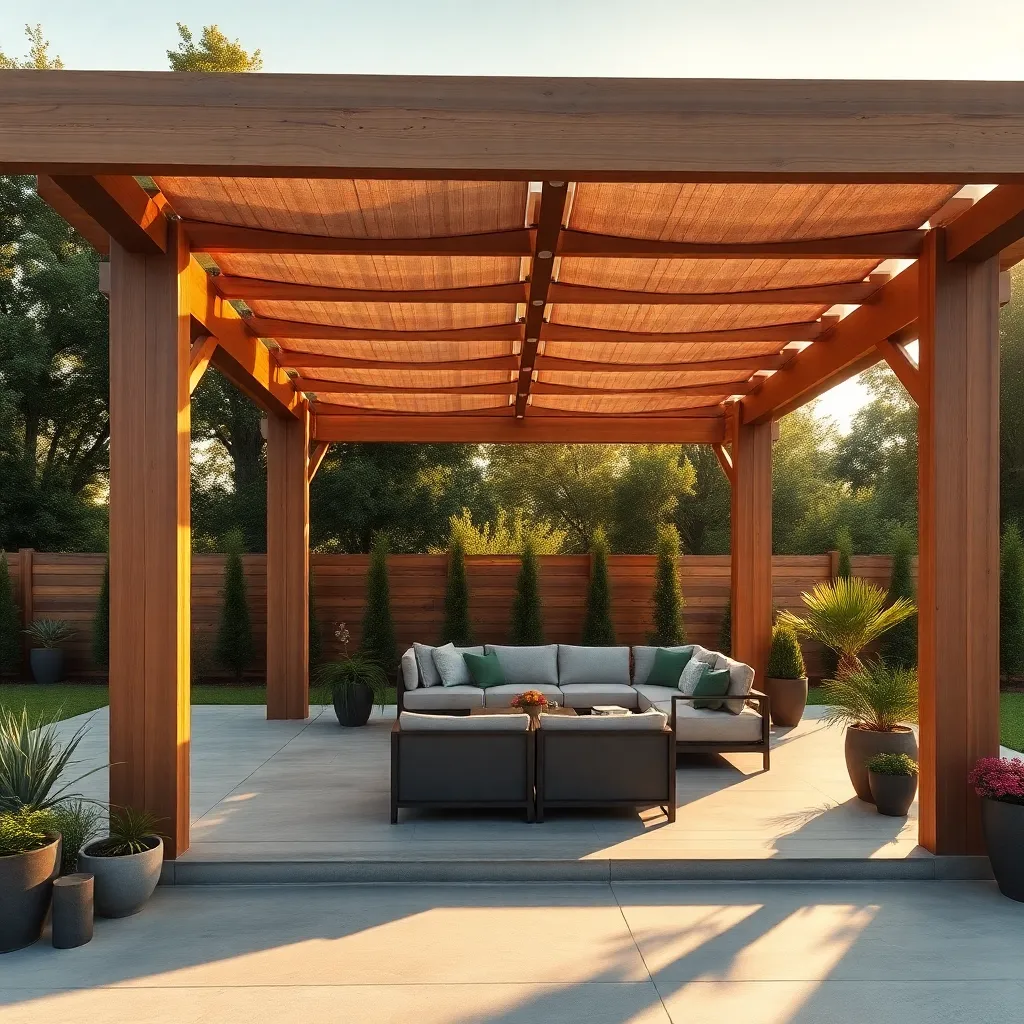
To incorporate modern design elements into your DIY pergola, consider using sleek, minimalist materials like powder-coated aluminum or sustainably sourced hardwood. These materials not only offer durability but also give a contemporary look that complements any backyard. Opt for a simple color palette, such as shades of gray, white, or black, to maintain a clean and cohesive appearance. For beginners, using pre-cut materials and modular components can simplify the construction process and ensure a professional finish.
Advanced builders can enhance their pergola with integrated lighting and retractable canopies for added functionality. LED strip lights along the beams offer a chic, modern touch and extend usability into the evening. When choosing dimensions, ensure your pergola is proportionate to your space, with a height of around 8-10 feet to provide ample headroom. For those looking to add a personal flair, consider incorporating unique elements like slatted walls or planters for vertical gardens, which add both privacy and a touch of greenery.
DIY Pergola Maintenance Tips
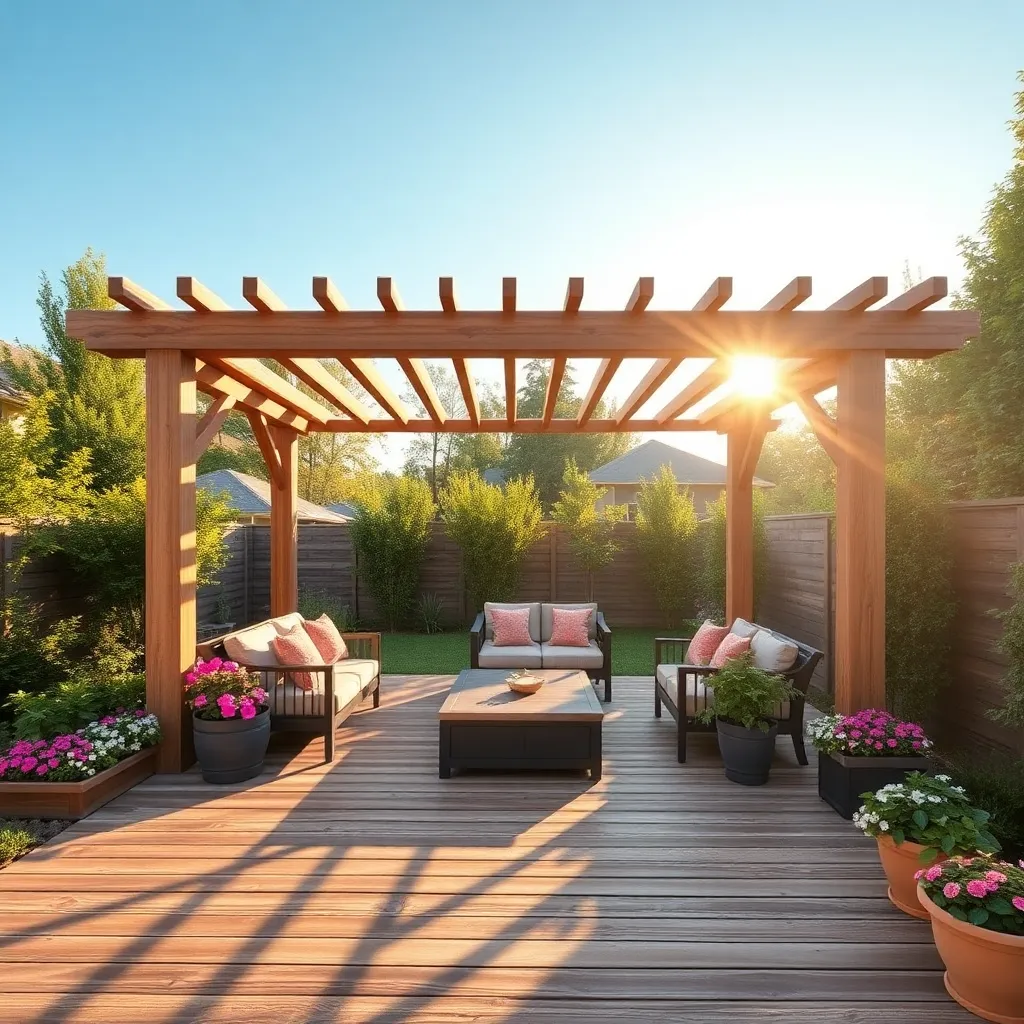
Regular maintenance of your DIY pergola ensures it remains a stunning focal point in your outdoor space. Begin with a thorough inspection for any signs of damage or wear, such as cracked wood or loose screws. For wooden pergolas, apply a fresh coat of weather-resistant sealant every year to protect against moisture and sun damage. If your pergola is metal, check for rust and treat it with a rust-inhibiting primer, followed by a fresh coat of paint to maintain its sleek appearance.
Cleaning your pergola is just as crucial to its longevity. Use a mild detergent and a soft brush to gently scrub away dirt and debris, especially after harsh weather conditions. For those who want a more lush and inviting atmosphere, consider adding climbing plants like wisteria or grapevines, which can also provide additional shade. Prune these plants regularly to prevent them from overwhelming the structure and ensure they complement the modern design elements of your pergola.
Maximizing Sun and Shade Balance
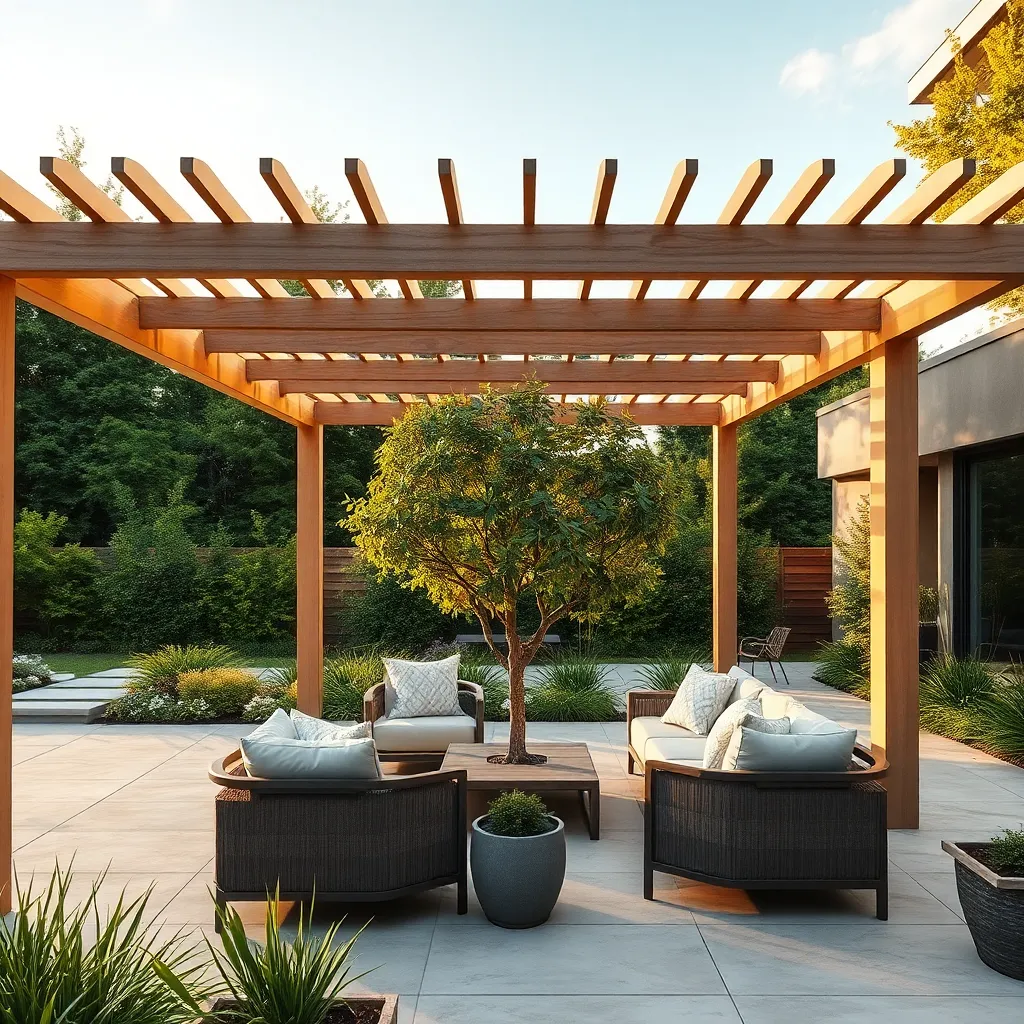
When designing a pergola to maximize the balance between sun and shade, consider using adjustable louvers or fabric panels that can be repositioned throughout the day. These elements provide flexibility, allowing you to control the amount of sunlight filtering through, making your outdoor space comfortable at any time. For beginners, starting with a simple design using weather-resistant fabric panels is a practical choice, as they are easy to install and maintain.
Advanced DIYers might explore using materials like polycarbonate or tempered glass panels to create a modern look while offering UV protection. Consider the orientation of your pergola: positioning it to maximize morning sun and afternoon shade can enhance usability. To achieve a seamless blend with your garden, incorporate natural elements like climbing plants or trellises, which not only add beauty but also increase shade as they grow. These thoughtful design touches ensure your pergola remains a functional and inviting outdoor retreat.
Personalizing Your Pergola Space
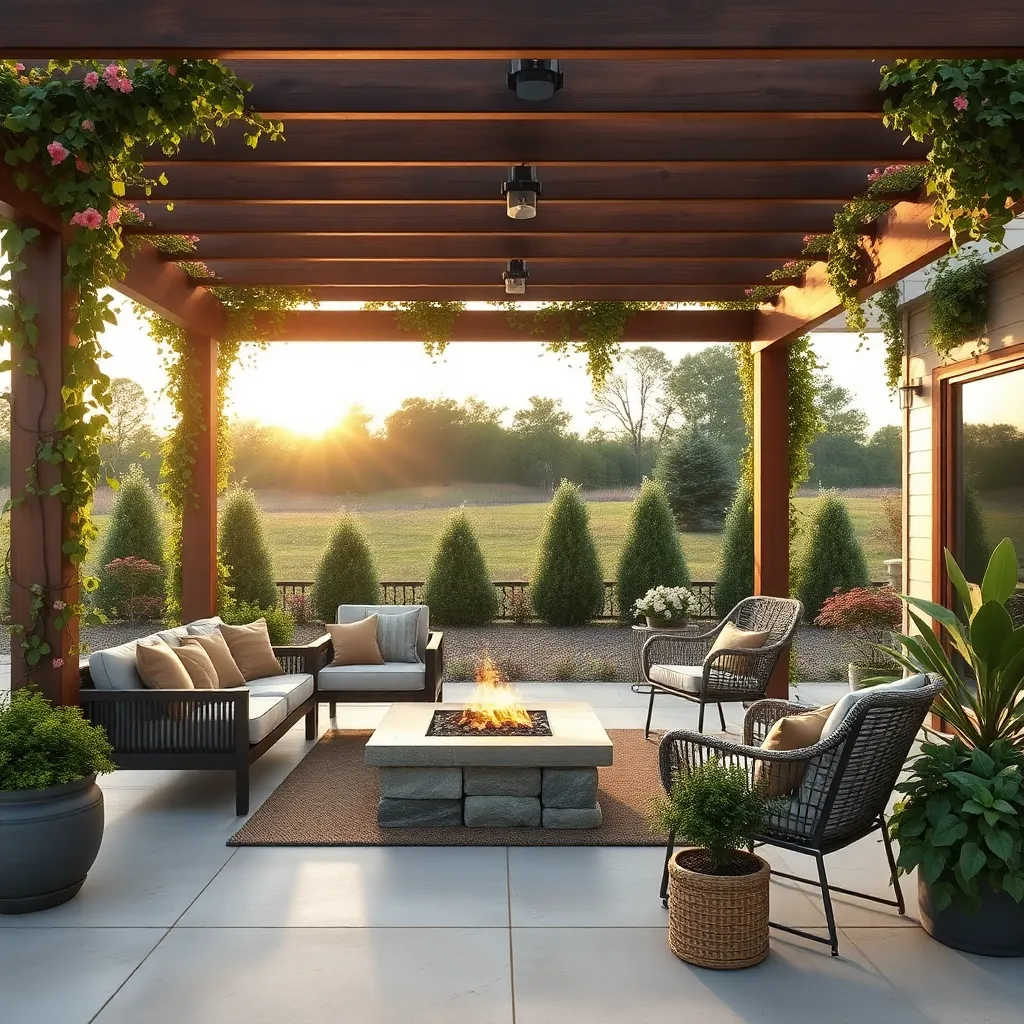
To make your pergola a true extension of your home, start by considering the materials that best suit your style and climate. Wood, metal, and vinyl are popular choices, each offering unique benefits. Wood provides a warm, natural look and can be stained or painted to match your exterior. Metal, like aluminum or steel, offers a sleek, modern feel and is highly durable. Vinyl is low maintenance and resists environmental damage. To add a personal touch, consider incorporating decorative elements like lattice panels or hanging planters.
Enhance your pergola’s functionality by integrating practical features. Install adjustable louvered panels or retractable canopies to control sunlight and weather exposure. String lights or solar-powered lamps can create a cozy evening atmosphere, while outdoor curtains add privacy and a touch of elegance. For those with more advanced skills, installing a built-in sound system or a small outdoor kitchen can transform your pergola into a multi-purpose entertainment area. Always measure your space carefully and plan your design to ensure each element fits seamlessly into your outdoor environment.
Conclusion: Creating Beautiful Outdoor Spaces
In exploring the ‘8 Modern Pergola Designs You Can Build Yourself’, we’ve uncovered key relationship concepts that parallel the art of building: the importance of strong foundations, the beauty of personal touch, adaptability, open communication, shared goals, the value of patience, creativity in problem-solving, and the joy of shared accomplishments. Each pergola design symbolizes these vital relationship elements, reminding us that with effort and creativity, we can build something truly beautiful and lasting together.
As a practical next step, consider discussing with your partner which concept resonates most with you both and how you can incorporate it into your relationship. Perhaps it’s planning a shared project or setting new relationship goals.
We encourage you to bookmark this article as a handy guide in your relationship journey, a reminder that just like crafting a pergola, nurturing a partnership is a rewarding endeavor that requires both vision and collaboration.
Remember, the future of your relationship is as bright and promising as the effort you invest in it today. Embrace these concepts, take action, and watch your relationship flourish into a masterpiece of love and understanding. Save this guide to inspire your path forward, and let it be a beacon of the love you’re building together.


